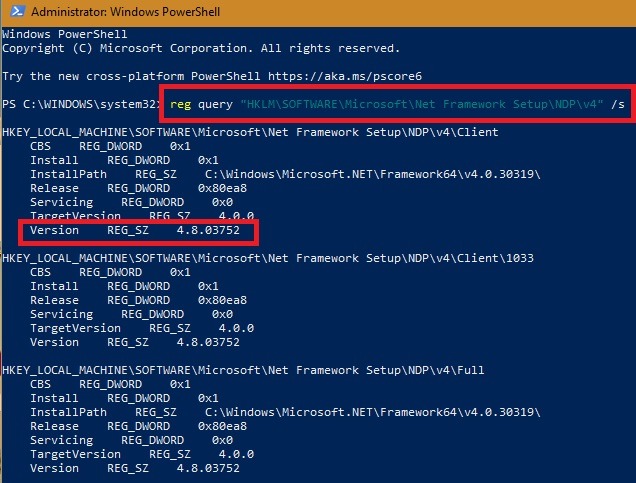How to Use SetupDiag to Fix Windows 10 Update Problems
SetupDiag is a free Microsoft utility that can be very useful for diagnosing any problems you may encounter in Windows 10 updates. Here we’ll learn how you can use this tool to learn the root cause of a failure and take corrective measures.
In case you are facing issues while migrating to version 1903, give SetupDiag a trial, as you will learn what the real bottlenecks are. I recently used this tool to guide my system’s Windows 10 migration from version 1903 to 1909 (KB4532695 update).
Download and Prerequisites
Download SetupDiag from this official link. The only prerequisites for using this software are that the destination should be Windows 10, and the system should at least have .NET framework 4.6.
The following command can be used to check the .NET version of your Windows device in a PowerShell window. Always use administrator mode for such checks.
reg query "HKLMSOFTWAREMicrosoftNet Framework SetupNDPv4" /s

As shown here, the version is 4.8, so the system definitely meets the requirement. You can always download the latest .NET version from this link.
Use SetupDiag to Diagnose Update Issues in Windows 10
As soon as you click the SetupDiag exe file, it will open in a command terminal. You must wait till the procedure is finished as the tool gathers baseline information from various setup logs.

SetupDiag parses the entire Windows 10 system and matches them against 60 or more error rules. These include boot failure detection, insufficient system partition disk, component failures, and more.

In this particular example, SetupDiag detected one fatal plugin error as shown here.

When the diagnosis is over, two files will be created in the folder which has the SetupDiag exe: a log file, and a configuration file. You can view the results using a Zip extractor tool.

The details of the error are shown below.

How to Troubleshoot Later
There are so many different kinds of errors possible during an upgrade that you have to review each one on a case-by-case basis. In this particular example, the error is called “FindFatalPluginFailure – E48E3F1C-26F6-4AFB-859B-BF637DA49636.”
I went back to the error rules discussed in the previous section: it matched rule number 41. This indicates any “plug-in failure that is fatal to setup with an output of the plugin name, operation and error code.”

The plug-in name is shown here. It was available through a simple folder search. As I found out through further online research, the faulty plug-in was incompatible with my system but otherwise harmless. This is a DLL file which does not carry malware, so it can be conveniently ignored. It is not proper to delete such files, as other programs may be using them. Also, it’s not recommended to download DLL files from non-Microsoft websites, as it can cause trouble.

The best way to deal with corrupt files is to repair them using a tool called “system file checker (sfc).” Enter the following command in administrator mode. Once the corrupt files have been repaired, you can go ahead with the version upgrade.
You can also do a routine disk check for errors by typing chkdsk.

Most other errors can be normally fixed. For example, if there is insufficient free space on them system volume, you can delete some unwanted programs. Refer this official link for a comprehensive selection of Windows 10 upgrade error codes and their solutions.
Once you have SetupDiag to fix up your Windows 10 problems, you can install PowerToys to extend Windows 10 functionality or make use of these shortcuts to work faster in Windows 10.


